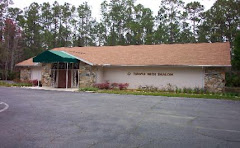












Four times in the Five Books of Moses, in Exodus, twice in the Book of Exodus and twice in the Book of Deuteronomy, the Children of Israel are commanded to bind the words of God “as a sign upon your arm, and they shall be a symbol between your eyes!” The ritual of binding and becoming tightly connected with God is also mentioned in the 23rd chapter of the Gospel According to Matthew.
In some quarters of Judaism, the ritual of binding oneself, each weekday morning, to the words of God through the use of Tefillin, sometimes called Phylacteries, is being lost as Jews assimilate into 21st century America. Tefillin, two black leather boxes containing scrolls of parchment inscribed with biblical verses the arm-tefillin, or shel yad, worn on the upper arm, while the head-tefillin, or shel rosh, is placed above the forehead, serve as a "sign" and "remembrance" that God brought the children of Israel out of Egypt.
Participating in an international program organized by the world-wide Federation of Jewish Men’s Clubs, Palm Coast’s Temple Beth Shalom Men’s Club led the Flagler congregation in a practice session to encourage adherence to this Biblically-ordained ritual. More than 50 men, women and children assembled in the synagogue’s sanctuary and practice the wrapping and binding, some using Tefillin handed down from parent to child over the course of more than a century.
After viewing an instructional and motivational film, mentors helped each and every participant don the ancient boxes, straps and scrolls that were worn for a 20 minute prayer service. The event was followed by a breakfast for all participants, some as young as 5 years old, others approaching their 90s. All agreed, that beginning one’s day on a note of spirituality and sanctity was akin to having breakfast with God! “It really has had a remarkably positive impact on me, on my behavior and my outlook,” said one participant. His wife added, “This has been a traditionally male-oriented ritual that we have now liberated and taken as our own. What a wonderful way to educate and set an example for our own daughters and granddaughters!”
